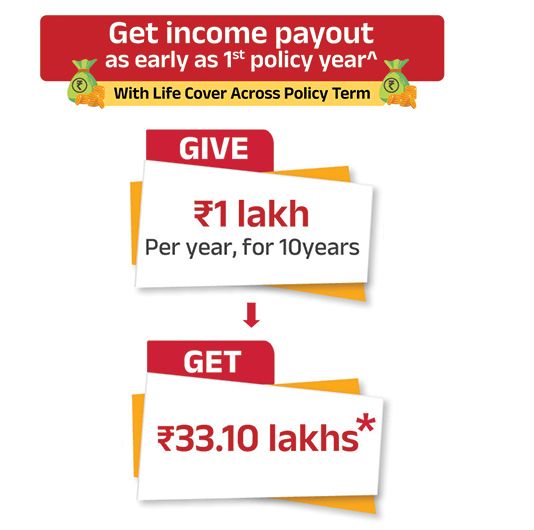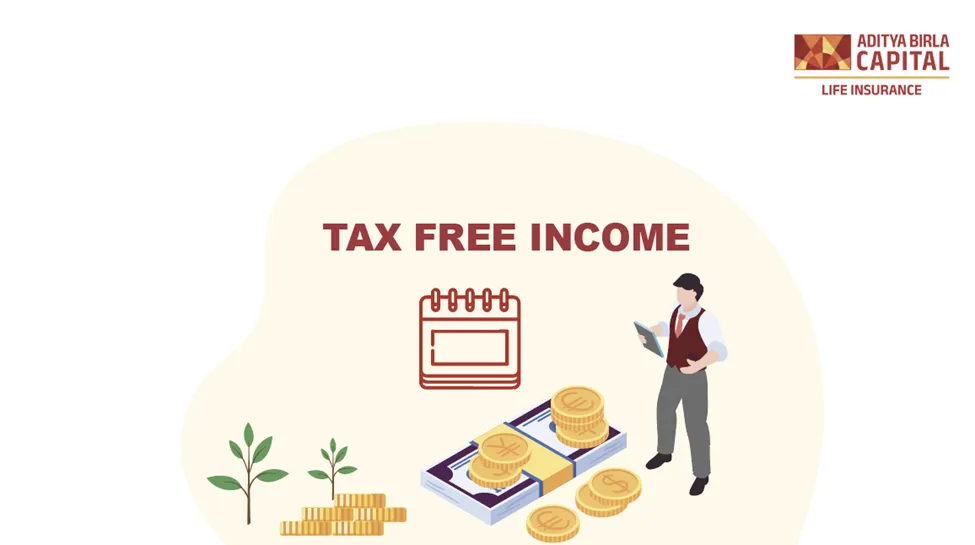Aditya Birla Sun Life Insurance Company Limited
Rs. 10,000 today or Rs. 50,000 5 years from now? Which is better?

Plan Smarter, Live Better!

Thank you for your details. We will reach out to you shortly.

Currently we are facing some issue. Please try after sometime.


- Table of Contents
Say it's your birthday. Or some other special occasion, and you're eagerly looking forward to several gifts and presents. Your friends and family don't disappoint - they give you just what you've been looking forward to, and more.
Except that one smart, financially savvy friend of yours. This friend doesn't give you your gift right away. Instead, they offer you a deal. You can choose from one of these options.
Option 1: Rs. 10,000 today
Option 2: Rs. 50,000 five years from now
At first glance, this may seem like a complex riddle. However, making a choice between these two options is quite simple. You just need to figure out how much Rs. 10,000 today is worth five years from now.
If it is worth more than Rs. 50,000, it would be better to choose option 1 If it is worth less than Rs. 50,000, it would be better to choose option 2
But how do you figure out the value of Rs. 10,000 five years from now? Here's where something called the 'time value of money' comes into the picture.
What is the time value of money?
Time value of money is a simple concept that is based on the fact that a rupee today is worth more than a rupee tomorrow. In other words, a rupee's value reduces over time, because of inflation. This means that you could buy a lot more with Rs. 1,000 in the year 2000 than you can now. The purchasing power of money - and therefore its value - reduces over time due to inflation.
And if you are given a rupee today, you can invest it to earn returns or gains with time. The rate at which you can invest this rupee and the period for which you invest it determine how much it will be worth in the future.
This leaves us with two areas of interest - the present value of money and the future value of money.
What is the present value of money?
The present value of money helps you understand how much a future inflow of money will be worth today. To calculate the present value of a future cash inflow, you need to discount that future money using the following formula.
| Present value = (Future cash flow) ÷ (1 + Rate of return)number of periods |
Here, the rate of return is also called the discount rate. And it is the rate of return you would have to forego if you decide to receive the cash in the future instead of in the present. And the number of periods is the time over which you would have invested that money.
Present value of money: An example Say you are going to receive Rs. 1,000 five years from now. But if you had that money in hand today, let's assume you would be able to invest it at 6% per annum. So, in your calculation, you would use 6% as the rate of return and 5 years as the number of periods.
And the present value of Rs. 1,000 five years from now, discounted at 6% per annum, would be as follows.
Present value:
= (Future cash flow) ÷ (1 + Rate of return)number of periods
= Rs. 1,000 ÷ (1 + 6%)5
= Rs. 747.26
What is the future value of money?
The future value of money is simply how much the cash you receive today would be worth in the future. To calculate the future value of a present cash flow, you need to discount that future money using the following formula. This formula is obtained by simply rearranging the present value formula.
| Future value = (Present cash flow) x (1 + Rate of return)number of periods |
Here, the rate of return is the rate at which the money in your hand would grow if you invest it today, for a specific period of time. The number of periods represents the duration for which you invest that money.
Future value of money: An example Say you have Rs. 750 in your hand now. And assume that you can invest it today at 6% per annum. So, how much would this money be worth five years from now?
Let's use the future value formula to compute the value of Rs. 750 five years from now, when invested at 6% per annum.
Future value:
= (Present cash flow) x (1 + Rate of return)number of periods
= Rs. 750 x (1 + 6%)5
= Rs. 1,000
So, Rs. 10,000 today vs. Rs. 50,000 five years later: How do they compare?
Let's get back to the initial puzzle now. If you recall, your financially savvy friend gave you a deal. You need to choose from one of these options. Option 1: Rs. 10,000 today Option 2: Rs. 50,000 five years from now Let's use the concept of time value of money to see how much Rs. 10,000 would grow in five years, if you invest it today. For the sake of convenience, let's assume you invest in an equity mutual fund that is expected to deliver an annual return of around 15%. So, here's the data.
- Present cash in hand = Rs. 10,000
- Rate of return: 15% per annum
- Number of periods: 5 years
So, the future value of Rs. 10,000 if invested today would be: = (Present cash flow) x (1 + Rate of return)number of periods = Rs. 10,000 x (1 + 15%)5 = Rs. 20,113
So, your Rs. 10,000 today would only grow to around Rs. 20,000 in 5 years if invested at 15%. But if you remember, your friend offered you the option to receive Rs. 50,000 in 5 years instead.
To match this, what is the rate at which you would have to invest Rs. 10,000 today, so it can grow to Rs. 50,000 in 5 years? With a little bit of back calculation and trial and error, that rate comes up to around 38% per annum.
So, if you can invest Rs. 10,000 today in a scheme or an asset that can deliver returns higher 38% per annum for 5 years, it would be a good idea to take the Rs. 10,000 that your friend is offering you now. v Some equity stocks or equity funds have had a history of offering these kinds of returns. However, keep in mind that these kinds of investments also carry a higher degree of risk. So, if you are more of a conservative investor who would prefer to invest in safer options that offer lower returns, your Rs. 10,000 today may not grow to Rs. 50,000 in five years. In this case, you would do well to take the other option that your friend has given you, i.e. Rs. 50,000 in 5 years.
Conclusion
That was quite an interesting puzzle, wasn't it? But now that you have understood how time affects the value of money, you can make more informed investment decisions. By this logic, you can also work out how much you need to invest today, if you want to build a corpus of a particular amount in, say 5 or 10 years for a major life goal. And you can quickly compute how a particular sum of money can grow with time, or how much potential future cash inflow would be worth today.
Read next: HOW TIME AFFECTS YOUR INVESTMENTS
Speaking of the present and future value of money, are you curious to find out more about how time affects your investments? If you said yes to that, you definitely need to check out our blog that explains how your investments are impacted by time.
ADD VALUE TO YOUR FUTURE AND PROTECT YOUR FAMILY FINANCIALLY TODAY
Your family and loved ones may have a lot of dreams and hopes for the future. Secure all of those life goals with the ABSLI Assured Savings Plan today.
This plan offers guaranteed# benefits that you can rely on to keep your family unaffected during a financial crisis. And that's not all. There are also loyalty additions that accrue over time, so you can save for your future right from day one.
Thanks for reaching out. We will reach out to you shortly.
Thanks for reaching out. Currently we are facing some issue.
Get immediate income payout after 1 day of policy issuance^
ABSLI Nishchit Aayush Plan
Guaranteed# Income
Life Cover across policy term
Lumpsum Benefit at policy maturity.
Get:
₹33.74 lakhs~
Pay:
₹10K/month for 10 years
Most Popular Calculator
Guaranteed returns after a month¹
ADV/12/21-22/1680







